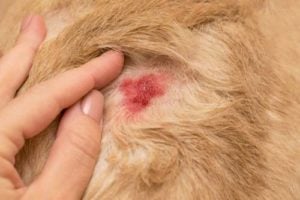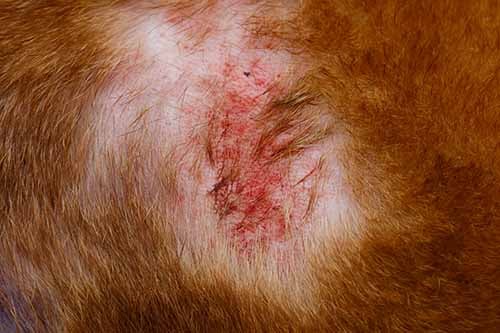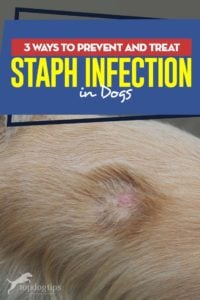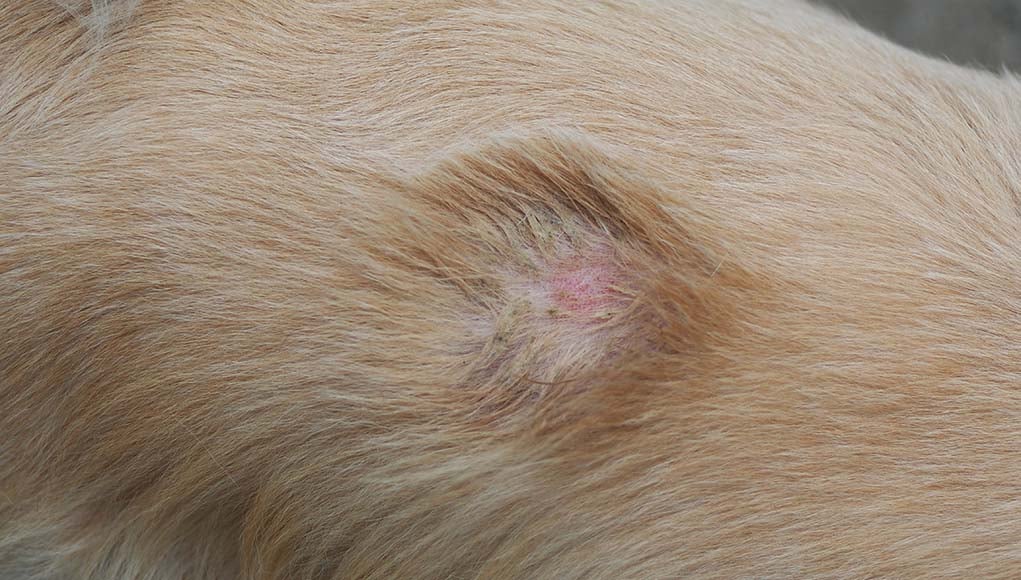Table of Contents
A staph infection is a type of infection caused by the bacteria Staphylococcus.
Staph infection in dogs is as common as it is in humans, and it's important for pet owners to know its symptoms and how to treat it.
This bacteria lives freely within the environment and does not require a host to live, although it may live within the upper respiratory system or the skin of a host.
The most common type of staph infection in dogs is an infection within the skin or Staphylococcal Dermatitis.
The reaction is a bacterial infection that causes the dog's skin to redden and become inflamed.
The bacteria is found naturally on the outside of the pet's skin and is not harmful as long as the skin remains healthy.
The infection occurs once the skin becomes irritated or injured, allowing the bacteria to enter the latter of skin and cause an infection.
Signs and Symptoms
Common signs and symptoms of staph infections are easily identifiable.
The symptoms consist mainly of skin abscesses, pain, loss of appetite, skin inflammation with pus-filled lesions, infections of the dog's eyes, skin, ears, or respiratory system, and excessive itching, chewing or licking.
The infected area may also be crusty or scaley, with areas of redness.
Keeping track of the different symptoms will allow a vet to accurately identify whether it was staph or some other bacteria that caused the infection.

Diagnosis of Staph Infection in Dogs
It's not the type of infection you're likely to diagnose at home.
If you observe some of the signs mentioned above, approach the vet with a comprehensive list of those symptoms that the dog has been experiencing, and the veterinarian will then perform a physical examination of the dog.
Vets will often conduct a biochemistry profile, a urinalysis, complete blood test, and a skin test to determine if allergies or immune-related issues are causing the inflammation.
In severe cases of infection, a skin biopsy and a skin swab will be taken to determine which of the antibiotics will work best.
Treatment of Staph in Dogs
The most common course of treatment for a staph infection in dogs involves oral antibiotic medication. If the infection is mainly within the skin, an antibacterial shampoo or topical ointment may be prescribed.
It requires several weeks of treatment before a staph infection is considered to be under control.
The main concern should be completing the full course of antibiotics as the staph infection can show no outward symptoms or signs, but may still exist underneath the animal's skin and reappear at a later date.
At-home treatment is possible when the infection is in the beginning stages.
Keeping the area clean and preventing the dog from messing with the infected area using an dog cone collar is critical.
If the infection continues to spread, there is a minimal chance of the staph infection healing completely using the at-home treatment alone.

How to Prevent Staph Infections
As the bacteria are always on the outside of their skin, the main ways to prevent staph infection in dogs consist of reducing irritants that may cause your pet to scratch or damage the outer layer of the skin.
There are three simple ways to reducing these irritants on the skin.
1. Removing Allergens
Dogs with severe or frequent allergies are at a higher risk for developing staph infections as their skin is constantly irritated, causing them to constantly scratch and nip at the affected areas.
Removal of these allergens will reduce the possibility of the opening of sores and scratches on their skin.
Identifying the allergen is the first step; removal comes next.
If the allergen is an environmental allergen, like grass, getting allergy medication from the vet, or visiting the vet once each month to get an allergy shot is the best option.
Initially, it may be a more substantial investment, but is made up for with the prevention of staph infections, as they can be costly as they develop into later stages and require intense treatment.
2. Maintaining Proper Nutrition
Keeping the dog in good health will allow the dog to prevent staph from the inside out.
When proper nutrient intake is supported, along with activity levels and hydration, the dog is less likely to develop health conditions or diseases.
Pay attention to what your pooch may be allergic too; pick foods that work for dogs with sensitivities, or switch to a homemade diet for dogs with skin allergies.
When dogs receive foods that agree with their system and are prevented from developing conditions and diseases through proper nutrition, that prevents them from causing issues within their skin, which would otherwise provoke the dog into scratching or biting, eventually resulting in bacteria getting under the skin.
3. Keeping Good Hygiene
Making sure that the dog's hygiene is always maintained can significantly reduce the risk of staph infections.
Regular washes (but not too frequent) and grooming can help reduce fleas and ticks, removing them as potential irritants.
When a grooming schedule is maintained, unusual spots on their skin become easily noticeable as well as being able to quickly notice when the dog has an open wound or scratch.
Treating the wounds at home before infection rather than waiting for an infection to take place to start treatment can reduce the risk of staph becoming an issue too.
Like humans, dog wounds can be treated initially by cleaning the affected area regularly and keeping the area protected from dirt and debris in the environment.
If the wound successfully heal on its own without vet intervention, a staph infection has been avoided.
4. Over Exposure to Medications
Believe it or not, certain antibiotics and medications can really mess up the gut health of dogs, just like it does in humans.
Gut health is tied to the immune system and the protection that your dog's skin provides. Aside from nutrition, your dog's skin is its first line of defense, but the health of that organ is can be compromised by medications.
In fact, there was a study done in 2014 that your dog can become immunocompromised from overexposure to corticosteroids.
This led to a chink in the dog's armor and the dog ended up having a staph infection.
Is Staph Contagious?
Yes, staph infections are contagious and they're zoonotic.
It can be transmitted from dog to dog and even from dog to human.
Dog to human transmission is very rare, but not impossible.
People with weakened immune systems are at the highest risk of infections.
Dog to dog transmission of staph is very common.
If the dog comes in contact with another dog that may be suffering from a staph infection or has open wounds, they are both at risk for further infection.
Staph infections can also be transferred through bites and scratches caused by other animals.
These infections can be higher risk, and a vet should be contacted immediately to test and see if there was a staph within the inflicted wound.
FAQ
Can you get a staph infection from a dog licking you?
No. You cannot. All dogs, cats, and humans have staph existing on our skin.
From my own experience, the only way you can get an infection is if there is damage or the skin is open when coming in contact with staphylococcus.
Can a dog get a staph infection from grooming?
It's not impossible, but it does not happen often.
The way it would happen is if they used contaminated shears or trimmers when breaking the dog's skin.
Related Articles
- Top 7 Best Dog Skin Infection Treatments (OTC)
- 9 Common Dog Skin Problems (How to Prevent and Treat Them)
- Impetigo in Dogs: Causes, Symptoms, and Treatment
Want to share?














